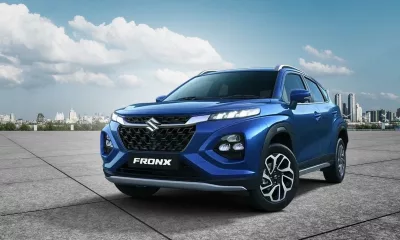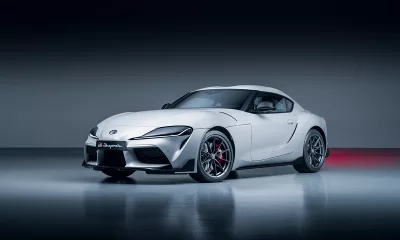WHEN German car designer Peter Schreyer (best known for penning the original Audi TT) joined Kia Motor Corporation in 2005, he immediately set about giving this Korean manufacturer a more recognisable face. He was determined to lift the brand from its conservative, budget image and get it up to the standard of the best Japanese and European manufacturers. The bad news for these competitors is that Kia’s engineering departments seem to share the same goals as the design office – the current generation of Kias go as well as they look.
The second-generation Sorento SUV was one of the first of the Schreyer-influenced Kia models to reach our shores and we tested the range-topping 2,2-litre turbodiesel 4×4 version in our March 2010 issue. Its bold styling aside, we were very impressed by this seven-seat SUV’s dramatically improved perceived quality over the previous generation, its comprehensive standard specification, refined powertrain and all-around tidy packaging. Also immediately obvious was a shift towards significantly improved on-road manners compared with the more offroad- biased first version.
The spicy red test unit went on to join our long-term fleet and continued to impress as the mileage accumulated. Used on the daily commute, we grew to appreciate the smooth workings of the six-speed automatic transmission, as well as the neat and comprehensively kitted interior, which included full leather upholstery, multi-function steering wheel, auto headlamps and one of the most efficient keyless entry and start systems that we have come across. Another neat accessory that proved as useful as a parking tool as it did a party trick was the standard rear park-distance camera, the screen of which “magically” appeared in the rearview mirror once reverse gear was selected.
Indeed, the Sorento proved a popular choice with children throughout its time with us; its third row of seats, easily raised in one motion from their storage space below the luggage floor, added a sense of occasion for those small enough to fully appreciate them.
With an emphasis on on-road comfort, this second-generation Sorento gained a new, compact MacPherson strut suspension in front (replacing the previous model’s double wishbone setup) and an all-new, fully independent multi-link arrangement at the rear. The part-time 4×4 system is able to send power to all four wheels when slip is detected. We noted that, although most road imperfections were comfortably absorbed, some harsher bumps knocked through. After careful assessment by our technical editor, Jake Venter, we came to the conclusion that the problem had more to do with the standard-fitment Kumho tyres (filled to a recommended 2,6 bar) than with the suspension. Dropping the pressures slightly seemed to improve matters.
Our Kia’s first visit to a dealership (Kia Motors Table View) was scheduled to have a replacement windscreen fitted after a nasty stone chip cracked the glass. This work was carried out in good time, even after the new glass had to be sourced from Johannesburg. The repair was covered by insurance at a cost of R5 900.
Any concerns we had regarding the time taken for this small repair paled in comparison to the length of time the Sorento spent at the dealer on its second visit. The vehicle was booked in at Kia Motors Cape Town for its 20 000 km service, at which time we mentioned a slight humming sound emanating from the rear differential. Sure enough, we were told the differential would have to be removed and sent away for evaluation. The next day, we were informed that Kia had decided to repair the differential under warranty, pending a quote from an external company. At this point, no mention was made of a courtesy vehicle. A week later, we were told that the necessary parts had been ordered from Korea and that these would take 21 working days to reach the workshop. On enquiring about the use of a courtesy vehicle, we were told that nothing was available for at least two weeks. As a reassurance that we hadn’t been forgotten, we received weekly text messages to inform us of the progress. Exactly six weeks after we last saw our Sorento (and coinciding with the on-sale date of our December 2010 issue, in which we published our concerns), we received a phone call from the dealer principal to apologise for the delay and explain that an error on the parts-order form was to blame for the longer-thanexpected delay. A courtesy vehicle was promptly delivered to our offices, which we used until we were reunited with our Sorento the following week.
Just as this same dealership must have breathed a sigh of relief at closing our job card, we returned to its waiting room to report a faulty driver’s side electric window. Like the windscreen, this part arrived a week later after being sent down from Johannesburg.
With 2 500 km of the full test distance left after our last visit to the dealer, it was up to the Sorento’s charms to remind us what we had missed while it was out of action.
The turbocharged common-rail 2,2-litre diesel engine proved to be an impressive performer (even if it did require slightly scarce 50 ppm diesel) and, with 437 N.m of torque on offer, overtaking acceleration proved effortless. Our best fuel consumption of 8,3 litres/100 km was achieved on a leisurely drive up the Garden Route, while the average for the year was 9,59 litres/100 km.
TEST SUMMARY
The Korean motor companies, primarily Hyundai and Kia, mean business in this market. A single meeting with one of the executives of these carmakers, both locally and internationally, is all that’s needed to realise their passion for success and hunger for constant improvement. Before our extended dealership experience, we sang Kia’s praises and highly recommended the Sorento. After reflecting on the 10 months we spent with the vehicle (while we look forward to Korean levels of efficiency being adopted by the local dealer network), our glowing recommendation remains.








